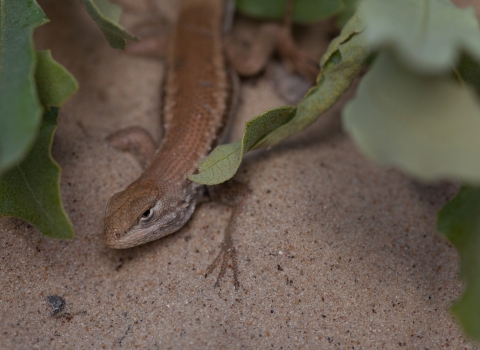KALISPELL, Mont. — The U.S. Fish and Wildlife Service and the International Dark-Sky Association (IDA) announced today that Lost Trail National Wildlife Refuge (Refuge) has received certification as an International Dark Sky Sanctuary. With IDA Dark Sky Sanctuary status, the 9,225-acre refuge in northwestern Montana is recognized as public land with an exceptional quality of starry nights and a nocturnal environment that is protected for its scientific, natural, and educational value, along with its cultural heritage and public enjoyment.
“As an International Dark Sky Sanctuary, Lost Trail National Wildlife Refuge provides a unique and special opportunity for visitors to experience a pristine, dark, and quiet environment with minimal influences from humankind,” stated Ashley Wilson, IDA’s Director of Conservation. “Refuge staff, volunteers, and partners have all worked tirelessly to invest in actions that will maintain the sense of remote wilderness and unspoiled dark and majestic night skies for all who come to venture into this lush and beautiful landscape.”
Established in 1999, Lost Trail National Wildlife Refuge conserves a variety of critical habitats, such as: wetlands for waterfowl and other waterbirds; riparian riparian
Definition of riparian habitat or riparian areas.
Learn more about riparian corridors for songbirds and moose; winter grasslands for large mammals, such as deer and elk; and forests for birds of prey and apex predators, including bears and wolves.
At least half of all animal species found on the Refuge can be considered nocturnal, including 13 species of bats, eight species of owls, most amphibian and reptile species, and hundreds of insect species. Naturally dark skies play a crucial role in the health and survival of these “active at night” species. By protecting night skies from the glare of artificial lights, Lost Trail National Wildlife Refuge maintains the natural cycle of light and dark for native wildlife and plants.
The Refuge offers visitors recreational opportunities, including wildlife viewing, photography, hiking, and hunting. Due to its isolated yet accessible location in Northwest Montana, the Refuge will also be an ideal place to visit for night sky viewing.
The Refuge is eager to offer more recreational opportunities in conjunction with its International Dark Sky Sanctuary status. Big Sky Astronomy Club, a group of dedicated amateur astronomers in Montana’s Flathead Valley, has committed to hosting at least one public outreach event each summer at the Refuge’s visitor center. Each event will include a night sky presentation where club members will set up their telescopes to observe planets, star clusters, and nebulae. Public maps of sky viewing opportunities at the Refuge are also being designed and will be available on the refuge’s website to facilitate visitors’ night sky viewing opportunities.
Over the last three years, the refuge has achieved the International Dark Sky Sanctuary status from IDA by completing actions that pertain to dark sky conservation. These actions include surveying natural darkness using a sky quality meter, mapping night sky viewing opportunities, and surveying and replacing all lights that were not dark-sky friendly. The Refuge now has a Dark Sky Plan in place to guarantee no additional lighting will pollute its protected landscape. Any newly installed lighting will only be approved for safety reasons in developed areas, and these lights will utilize dark-sky friendly practices.
Inspired to pursue dark sky conservation measures during her nighttime work of owl surveys and toad research, project lead and Wildlife Biologist Beverly Skinner reflected, “I have always taken the time to look up and I am never disappointed.”
The International Dark Sky Places Program was founded in 2001 as a non-regulatory and voluntary program to encourage communities, parks, and protected areas around the world to preserve and protect dark sites through effective lighting policies, environmentally responsible outdoor lighting, and public education. When used indiscriminately, artificial light can disrupt ecosystems, impact human health, waste money and energy, contribute to climate change climate change
Climate change includes both global warming driven by human-induced emissions of greenhouse gases and the resulting large-scale shifts in weather patterns. Though there have been previous periods of climatic change, since the mid-20th century humans have had an unprecedented impact on Earth's climate system and caused change on a global scale.
Learn more about climate change , and block our view and connection to the universe. Lost Trail National Wildlife Refuge now joins more than 200 Places that have demonstrated robust community support for dark sky advocacy and strive to protect the night from light pollution.
The mission of IDA is to preserve and protect the nighttime environment and our heritage of dark skies through environmentally responsible outdoor lighting.
Plan your visit and learn more about Lost Trail National Wildlife Refuge at www.fws.gov/refuge/lost-trail.
###
The U.S. Fish and Wildlife Service works with others to conserve, protect, and enhance fish, wildlife, plants, and their habitats for the continuing benefit of the American people. For more information, visit www.fws.gov, or connect with us through any of these social media channels: Facebook, Twitter, Flickr, and YouTube.
– FWS –



